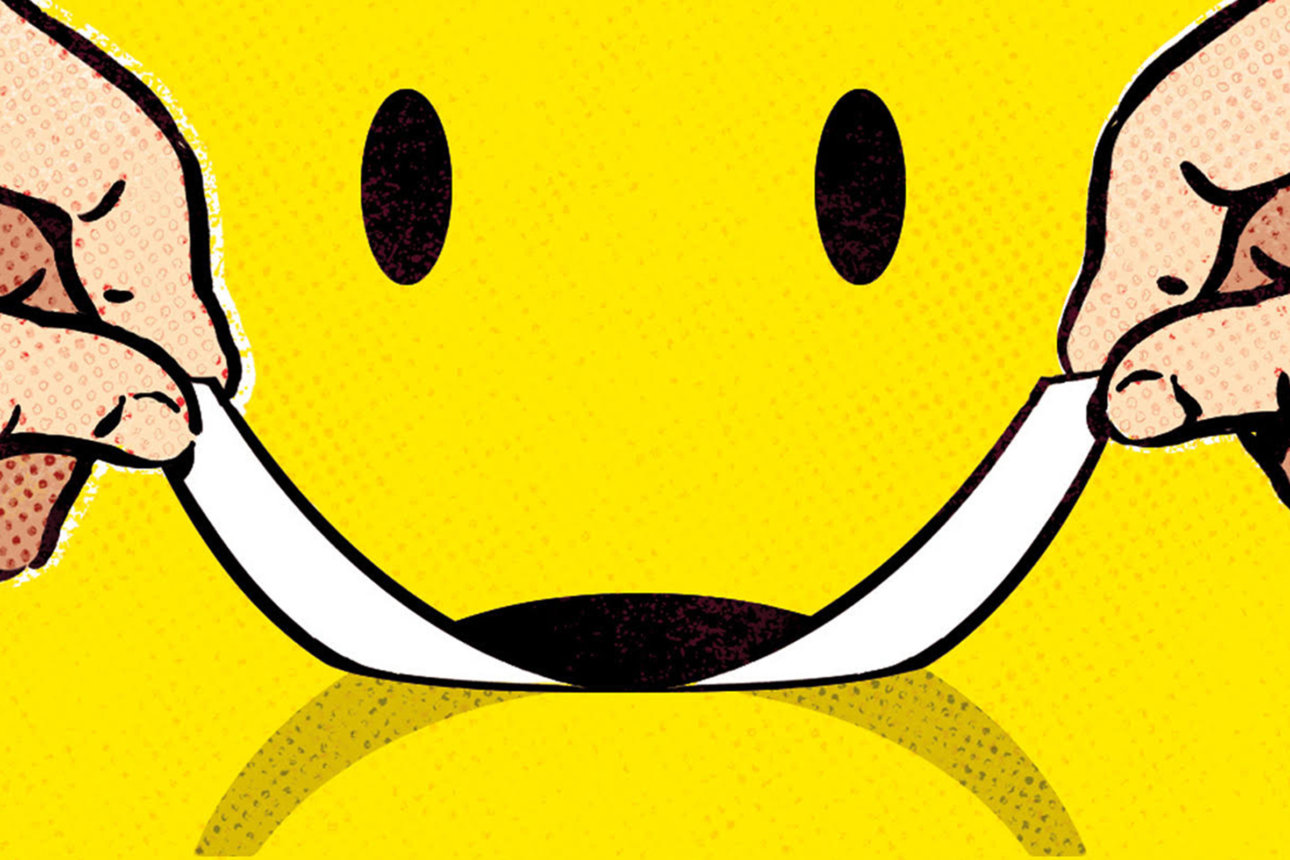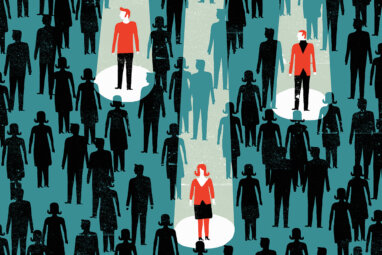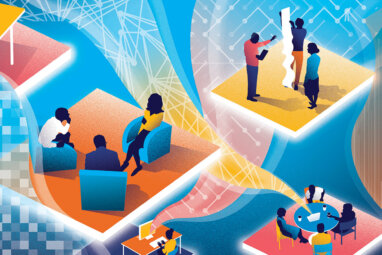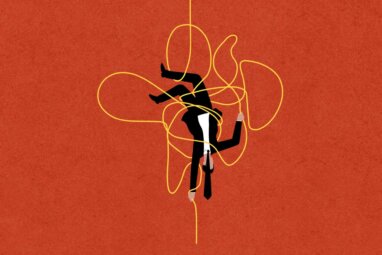The Magic That Makes Customer Experiences Stick
The most memorable experiences are suffused with emotion — not extra features or value for money.

Image courtesy of Chris Gash/theispot.com
A participant in one of my Harvard Business School executive education classes told a story about a family trip to Walt Disney World in Orlando, Florida. She lost her purse in the park on the very first day: tickets, money, IDs, all gone. The highly anticipated vacation seemed all but over before it had begun. But when the family turned to a Disney employee for help, he gave them food vouchers and park tickets for the next day. And while the relieved family was enjoying the park, Disney employees searched for the purse — and found it. The executive enthused to my class: “Wow, what a company!”
Over the years I have heard hundreds of such stories in my classes. I ask students to tell them as part of an effort to develop principles that can be applied to the design of great customer experiences. This field of customer experience (CX) design — which aims to ensure that customers have positive touch points with companies while buying and consuming their products and services — has grown quickly in recent years. Research has shown that memorable experiences, and the ensuing positive word of mouth, can drive customer decisions as much as, if not more than, price and functionality.1 To that end, consultants have created thoughtful tools and frameworks such as journey mapping, service blueprinting, and problem-solving mindsets. Academics have studied customer engagement models that focus on managerial variables such as employee selection, training, rewards, and service culture. Yet recent research reports suggest that there have been few, if any, meaningful improvements in customer experience over time.2 Despite the insights gleaned about customers through advanced technologies and data analysis, something still seems to be missing for most companies.
My classroom experience points to the missing ingredient: emotion. Years ago, when I first asked students for their most memorable experiences as customers, I was surprised by the language they chose: Made me feel special. Showed empathy. Really cared. Personalized the process. Trusted me. Didn’t argue or delay. Killed us with kindness. Owned the problem. Surprised us. Made things simple. These executives weren’t using the standard language of business. They weren’t using terms like functional value, efficiency, and cost-value analysis. Instead, they were describing emotional impact. Their feelings of surprise, delight, happiness, relief, empathy, and more defined their most memorable experiences.
The stories they shared — along with a deep dive into research on the many components of decision-making — led me to a critical insight: Customers want their choices to align as much with their feelings and senses as with their values and ethics. The rational approaches taught at most business schools — offer customers more value for money, add features, make service more efficient — are not enough. Creating memorable experiences for customers also requires a bit of emotional magic. This article explores how that can work, drawing on several company cases to illustrate. People like to think of themselves as logical, but the truth is that emotions inspire decisions.
Research on human cognition and behavior supports the idea that customer experiences should be as infused with emotion as they are with logic and rationality. “The essential difference between emotion and reason is that emotion leads to action while reason leads to conclusions,” writes neurologist Donald Calne in Within Reason: Rationality and Human Behavior. Psychologist Richard Lazarus clarifies this idea in his book Emotion and Adaptation, where he argues that cognition (thinking), emotions (feeling), and motivation (acting) work as a system, with emotions serving as the critical go-between. Lazarus says that events — and by events he means everything from experiencing an earthquake to shopping for shoes — trigger a cognitive appraisal and an emotional reaction before we come to a decision on what to do. This process helps explain the many studies described in behavioral economist Dan Ariely’s book Predictably Irrational in which people behaved irrationally. We overpay, underestimate, procrastinate, and so on because we are emotional beings, not rational automatons.
The behaviorists’ theories and results are borne out by quantitative research. A Forrester Research study found that customer loyalty is driven more by emotional factors than by rational ones.3 Another study, by CEB Marketing Leadership Council and Google, suggests that this may also be true in B2B decisions. They surveyed 3,000 B2B buyers across 36 brands and interviewed 50 B2B marketing organizations, and found that personal value (appeal to emotions) has twice the impact of business value (appeal to logic and reason) on favorable decisions.4
The payoff can be huge. A report from Gallup suggests that organizations that optimize emotional connections outperform rivals by 26% in terms of gross margin and 85% in terms of sales growth.5 They cultivate emotionally engaged customers who are less price sensitive, less likely to buy from competitors, and three times more likely to recommend and repurchase.
Celebrate the Outliers
Ask yourself this: Is your company trying to minimize complaints or maximize customer delight? Given the research I’ve cited, you might think that every company would be trying to create dynamic, delightful customer journeys infused with emotion. You’d be wrong. Many focus almost solely on complaints. Their goal: Eliminate the customer’s pain at every point where the consumer and the company intersect. It’s a myopic strategy that leads to consistent mediocrity, because companies miss much of what the customer experiences on his or her journey.
Today’s customer journey is not just a matter of a few touch points as the consumer systematically narrows choices. Instead, most consumers take an iterative and expansive journey. They consider multiple perspectives, often through the use of social media. They interact with other people and other products and services. The journey between visiting a company’s website, say, and making an actual purchase is an emotional, cognitive, and motivational process. It’s the mix of those forces that creates feelings, memories, and stories about an organization, whether positive, negative, or ambivalent. It’s this variability that creates opportunities for companies to deliver memorable experiences. Rules and standardization can get in the way (see “Reducing Variability Can Eliminate Terrible and Great Experiences”), because sameness is forgettable.
For that reason, positively varied emotional journeys can have the richest payoff. They leave indelible memories, increase customer loyalty, and have multiplier effects in a world where customers are closely connected.6 For companies that embrace variability, even terrible experiences that spawn negative emotions — such as that lost purse at Disney World — are an opportunity.7 If the company surprises and delights the customer by efficiently and innovatively resolving his or her problem, the dominant emotion, the one that lasts in memory, will be positive. The managerial challenge is clear: how to infuse customer journeys with emotion.
Building Emotion Into Customer Experiences
Bringing emotion into customer journeys isn’t easy. Triggering a specific emotion at a particular touch point doesn’t guarantee anything. Instead, companies must address the customer journey holistically, understanding that people may remember emotions generated anywhere along the way. In my work over the last few years, I’ve identified five ways to do this.
1. Stimulate the senses. Sensory stimulation triggers emotions such as surprise, trust, joy, and even anticipation. Through products from cars to smartphones, clever companies use the senses to create emotional experiences.
At Ferrari, for example, automobile design is more than an exercise in efficient engineering. It’s also a process that taps into the driver’s senses to create an emotionally rich experience, from the pleasing sight of the car’s body to the exhilarating roar of the engine.8 Ferrari uses plush interior materials such as fine leather, even though this gives lighter, faster competitors a 5- to 10-kilogram advantage. The company also experiments with advanced technology, engine placement, tire dimensions, and the nuances of wheel movement to impart a feeling of control as you steer through tight corners or accelerate laterally. Compared with the fear you might feel in other sports cars as your back wheels fishtail, there’s a sense of power and achievement here, of believing that you are an exceptional driver steering the car to new heights of performance.
The story of how Ferrari struggled to get the sound right for its turbocharged 488 also illustrates how much attention it pays to emotions. For years, Ferrari worried that turbocharged engines, which can flatten intake and exhaust sounds while introducing annoying tones such as whistling, would detract from the pleasure of driving. At Ferrari, sound is a critical component of what a car buyer expects and enjoys. Indeed, there’s real evidence that customers associate sound with performance. Could Ferrari engineer turbo engines for an emotionally pleasing driving experience?
Using a proprietary sound simulator, the equivalent of three Ferrari engineers and drivers worked full time for two years on the problem. One of the team’s recommendations — increase the exhaust diameter from 63 to 70 millimeters — had extensive ripple effects for engineers and company managers. Implementation was difficult and time-consuming.
That kind of investment might seem excessive at other companies, but not at Ferrari, which places great value on the emotions behind the driving experience. The 488 has garnered praise and prizes for its sound and performance, winning the 2018 International Engine of the Year award in Stuttgart, Germany (rival Porsche’s hometown), and being hailed as Robb Report’s Car of the Year in 2016. Ferraris may not be the fastest or the most comfortable cars, but the company focuses on producing the best combination of the two, making their cars among the world’s most thrilling and luxurious.
Stimulating the senses doesn’t mean creating sensory overload. Some of the best examples of sensory appeal are ones where complexity gives way to simplicity. Apple products are known for this. From the original Mac to AirPods and iPhones, the company repeatedly hides cutting-edge technology behind a simple user interface that customers love. Few competitors have been able to achieve that. Samsung, for example, trails Apple in user experience even though, feature by feature, its products are often superior.
The power of sensory simplicity is at work at HappyOrNot (HON), a small Finnish startup that measures businesses’ customer satisfaction through polling.9 The central challenge is how to gather enough responses to support meaningful conclusions. Few customers have the time or inclination to fill out long, boring surveys.
HON tackles this problem with radical visual and tactile simplicity. Near the exits of department stores, airports, dining halls, drugstores, supermarkets, and other establishments, HON installs a terminal with four big push buttons. The green ones have smiley faces, and the red ones have frowny faces. The shades of the most smiley and most frowny are darker than the other two. A small sign asks customers to rate their experience by pressing one of the buttons. A HON terminal can prompt thousands of reactions in a single day. In fact, with terminals in over 100 countries, HappyOrNot’s buttons have prompted well over 600 million responses from customers. That’s more than all the customer ratings posted to sites like Yelp, TripAdvisor, or Amazon. The clarity of the colors is important, but the company believes that the satisfying tactile experience of pressing a button is the primary driver of this extraordinary participation.
2. Turn disappointment into delight. If your company is going to value the outliers, it must be ready to transform negative experiences into positives, as the hotel manager did in this story:
After a long transcontinental flight, my tired family arrived at a Taj Group hotel in India in the middle of the night. The front desk couldn’t find our reservation. Still, the night manager immediately took us to a room so we could go to bed right away, and even gave us an upgrade for the inconvenience (we waited less than five minutes!). He didn’t ask for a credit card or anything. When we woke up, the problem had been solved — and it wasn’t the hotel’s fault. Our booking agent had made a mistake.
I’ve heard many variations of this story (you may have, too), but the gist is always the same. By resolving a problem that he didn’t cause, the night manager delivered an experience that was remembered for years. When employees are taught to be in tune with the customer’s emotions, they can notice changes in emotional state and respond quickly. As their alacrity accelerates the shift from disappointment to delight, the intervention creates a sudden contrast that makes experiences sticky. (See “Capitalizing on Emotional Transitions.”)
Magicians, who constantly think about the audience experience, understand the emotional value of rapid shifts from disappointment and confusion to happy resolution. They have developed techniques to change people’s emotional states. For instance, a magician may allow members of the audience to believe that they have figured out the trick or caught him in a mistake, only to end it in a way that shows the audience had no idea what was really going on. Their momentary disappointment at their failure to “catch” the magician quickly transforms into delight in his excellence. Disappointment to delight: Magicians know that this emotional transition will wow audiences more than a constant flow of technically perfect tricks. The former creates memorable moments, while the latter may cause eyes to glaze over.
3. Plan to surprise. Good magic also upends expectations in order to engage people emotionally. For instance, the well-known magician Doug Henning developed an illusion in which an assistant would float on water, with a fountain providing cover for the support mechanism. But then magician David Copperfield, aware that audiences may have figured that out, took the trick further. Anticipating their reaction, he turned off the fountain, and the assistant remained floating — which surprised and impressed even people who knew of Henning’s show.
Like magicians, companies can thrill customers again and again through continual innovation and unexpected solutions to problems, building a loyal, delighted following for their products and services.
Creating those moments of surprise is often the result of paying attention to the smallest detail. When former Sony CEO Kazuo Hirai set out to turn around the company’s TV business in 2011, for instance, he discovered a fundamental problem.10 While the designs for Sony’s new TVs were beautiful, some customers said they found their sets ugly because the cables couldn’t be concealed. Armed with that knowledge, Hirai started responding in the same way to every new design: “I’m still seeing cables, and I don’t want to see the cables.” It took three years for the engineers to truly get the message. Hirai was teaching them that details matter to the customer, and that Sony would never develop winning products if it didn’t pay attention to the feelings its products evoked.
Sony eventually found a way of concealing the cables. As Hirai expected, customers were delighted by the surprise of not seeing the wires they had grown so accustomed to disliking and tolerating. Hirai, who recently retired as Sony’s chairman, told me: “Everything we do at Sony needs to have that ‘Wow, this is pretty cool’ element. … We don’t compete on functional specifications [anymore], but on people’s emotional experiences.”
Some companies try to inspire a desire to surprise in their employees. The Oberoi Group, a global hotel chain based in Delhi, India, gives its employees funding to surprise guests by turning problems into opportunities.11 Team members get funding to create such moments of delight; in 2013, employees logged more than 30,000 examples of this kind of problem-solving. Similarly, an equipment company has given its front-line employees a considerable budget to solve customer problems — without having to ask for approval. Company leaders call it the memorable experiences budget. Empowering employees with resources can extend your ability to surprise and delight your customers.
4. Tell compelling stories. A good story, well told and repeated often, is a powerful way to create an emotional connection between customer and company. For most of our existence, oral narratives have been a primary means of learning, socializing, and transmitting knowledge, so we are conditioned to understand, remember, and tell stories. Companies that infuse them into the customer’s brand experience can provoke an emotional response and create sticky memories.
Consider A. Lange & Söhne (Lange), a watchmaker with East German roots and a fascinating history.12 In 1990, after the fall of the Berlin Wall, Walter Lange resurrected the company started by his great-grandfather, F.A. Lange, which had all but disappeared during the previous decades. Instituting a focus on innovation and craftsmanship, he propelled Lange into the ranks of the world’s finest brands with the launch of its first wristwatches in 1994.
With products that can cost hundreds of thousands of dollars, Lange knows it must position itself as a paragon of innovation, excellence, and diligence. One story it tells to reinforce that image is about the assembly of its watches. Every Lange timepiece is put together by hand — twice. When the first assembly is complete, the watch is taken apart. Every part is cleaned, and the watch is then assembled anew. During the second assembly, the watchmaker can make small adjustments based on the first assembly. The tangible result may improve the watch’s accuracy by perhaps one or two seconds a day. The intangible result, arguably, is more important. Lange’s double assembly process communicates the essence of the company and its products. It tells the world that Lange cares so much about creating perfect products that it routinely does something that rivals regard as inefficient. Even though few customers can discern any difference between a watch assembled once and another assembled twice, the story is told and retold in Lange’s marketing materials, in personal interactions with customers, and, most powerfully, through word of mouth.
Storytelling techniques have played an important role in the reemergence of the mechanical watch industry more broadly, after battery-powered quartz watches made mechanical ones nearly obsolete. In a study that included 136 interviews with senior executives, watchmakers, distributors, retailers, historians, and museum curators and a review of extensive archival data, my Harvard Business School colleague Ryan Raffaelli found that the reemergence “involved a cognitive process of redefining both the meanings and values associated with the legacy technology.”13 Mechanical watchmakers used literary devices — metaphors and analogies — to distance their products from the negative perceptions most people had of cheap quartz watches. Said one executive, “We don’t sell watches. We sell dreams.” Others compared the watch to the human body, creating an empathic connection between customers and the mechanical parts of the product they were eyeing. Raffaelli writes, “Several people likened the oscillating balance wheel of the mechanical watch to a ‘beating heart,’ describing the watch’s gears as part of a ‘living organism’ that needed to be ‘fed’ with daily winding. A CEO stated, ‘A mechanical watch has a soul, it has a heart, it has life, it has something breathing inside of it.’” Described in this way, the watch essentially becomes a protagonist, which encourages customers to connect with the brand on a human level.
This kind of storytelling is yet another form of emotional magic that companies can perform. Before a trick culminates, magicians often walk an audience through the various steps just taken (“You picked a card, I turned around, you placed the card in the deck … ”). The purpose is to focus the audience on what they should remember, omitting anything that might be inconsistent with the intended effect. The reframing becomes the new reality, shaping people’s memory of and feelings about the trick in a positive way. Good storytelling can do the same for companies, reinforcing positive emotions that cement the relationship between a customer and a brand.
5. Run controlled experiments. Even companies intent on infusing emotion into their customers’ journeys have a terribly hard time predicting which triggers will prompt customers to act. The question companies must ask is not simply “What works?” but “What works where, when, and for whom?” And more often than not, they should be prepared for dead ends in their search for answers. To give just one example, only 10% to 20% of the web experience improvements attempted by Google and Bing yield positive results.14 Scoffing at those percentages would be a mistake. Smart companies in businesses as diverse as high tech, media, retail, financial services, and travel know that controlled experiments and learning from those that don’t pan out are necessary components of designing emotionally powerful customer experiences.
Booking.com, the travel accommodations aggregator, is relentless in its focus on optimizing user experiences and in its experimentation to that end. At any point in time, Booking.com’s staff may be running more than 1,000 live tests. (About three-fourths of the company’s 1,800 core product and technology employees are involved in testing.) Most are so-called A/B tests, where the company sets up two experiences for users: A, the control, is usually the current system, and B, the treatment, is a modification — such as a new layout, a new pricing model, or new wording for a customer communication — that attempts to improve something for customers. Customers are randomly steered to one of the two experiences, and the resulting metrics are compared. The test’s winner then becomes the current system — until a future modification, tested in the same way, replaces it.
The goal of some tests is to discover tactics that elicit emotions such as surprise and joy (from getting a terrific deal), fear (of missing out on a deal or a room), or a feeling of accomplishment (for successfully organizing a trip).15 These experiments have taught Booking.com a lot. For instance, “please book now or you will lose this reservation” and “only three rooms left” are appeals that spur more customers to make Booking.com reservations. Such messages may play on users’ fears, but the end result is that they replace the uncertainty customers feel when they log on with the satisfaction of finding a place to stay at a good price. The experiments are far from perfect — 9 out of 10 tests fail to have an impact on key performance metrics (for example, conversion rates) — but they inch the company closer to fulfilling its mission: taking the friction out of travel.
About a decade ago, magician Jason Randal was teaching a protégé, Kevin Viner, how to deliver memorable experiences. They tell me their conversation went something like this:
JR: “What are you doing at a party or show?”
KV: “I am entertaining people.”JR: “What are you really doing?”
KV: “I am doing magic.”
JR: “What are you really doing?”
KV: “Card tricks, rope tricks, coin tricks. …”
JR: “What are you really doing?”
KV: “Now I am confused.”JR: “When I perform at a show or a party, my goal always is to change how people feel, for the better. Magic is just a way to get me there. If I keep that goal in mind, I find that I am much more effective than if I go to a show just to do magic tricks or to make money.”
Viner, who now performs all over the world, says that this insight about changing people’s emotional state was so profound that it transformed the way he approaches performances. Like Viner, companies that go the extra mile to change how customers feel are more likely to create great experiences that will never be forgotten.
References (15)
1. T.A. Stewart and P. O’Connell, Woo, Wow, and Win: Service Design, Strategy, and the Art of Customer Delight (New York: HarperBusiness, 2016).
2. V. Milligan, “Customer Experience Index Reveals Brands Lack Human Connection,” Sept. 5, 2018, https://go.forrester.com; and “Tomorrow’s Experience, Today — Global Customer Experience Excellence Analysis,” KPMG Nunwood, 2018, www.nunwood.com.









Comments (2)
Cato Furum
Jean Létourneau